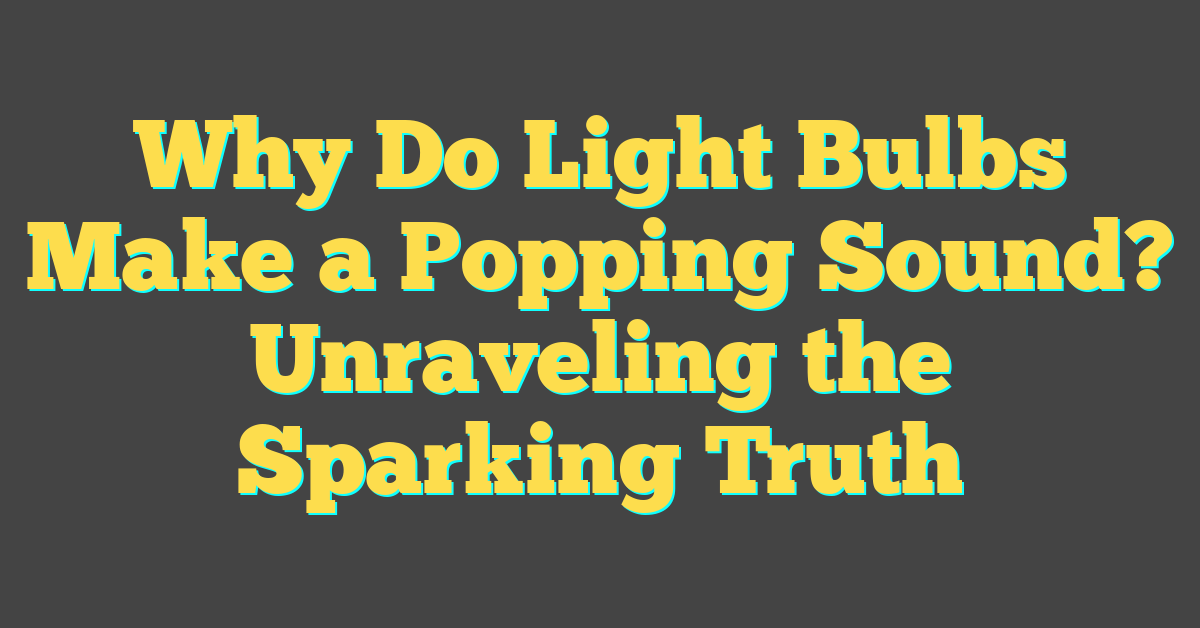Understanding the nuances of 100-watt light bulbs is crucial as they have been a baseline for brightness in many households and workplaces. These bulbs have historically been known for their ability to emit strong light suitable for various applications. However, modern regulations and a shift towards energy efficiency have led to significant changes in the market. Nowadays, 100-watt light bulbs are often found with newer technology like LEDs, which draw less power while still providing an equivalent level of brightness. This means that while traditional incandescent 100-watt bulbs are becoming rarer, their legacy continues in the form of energy-efficient replacements.


Choosing the right light bulb involves knowing not just the wattage, but also understanding lumens, which indicate the actual amount of light the bulb emits. Another critical factor is the color temperature, measured in Kelvins, which affects the warmth or coolness of the light. Additionally, features such as dimmability and smart technology integration are now more common and can influence your purchasing decision. It’s important to select a bulb that not only fits the lamp you intend to use it in but also aligns with your energy consumption goals and the ambiance you wish to create in your space.
Key Takeaways
- Energy-efficient bulbs provide the same brightness with lower wattage.
- Lumens measure light output, while color temperature defines light appearance.
- Advanced features like dimmability and smart tech enhance modern lighting.
History of Light Bulbs
Light bulbs have come a long way since their inception. In the early stages of development, incandescent bulbs were the center of innovation, turning electricity into light by heating a thin strip known as the filament to high temperatures. The filament, usually made from tungsten, illuminates when it gets hot, casting a warm glow that you’re likely familiar with.
Here’s a quick timeline to illustrate this journey:
| Year | Milestone |
|---|---|
| Early 1800s | Invention of the first incandescent bulb. |
| 1835 | First constant electric light demonstrated. |
| 1879 | Thomas Edison’s successful bulb, lasting 13.5 hours. |
| Early 1900s | Introduction of tungsten filaments for a longer-lasting bulb. |
Your typical 100-watt incandescent bulb is known for its warm, bright light, often used in household lamps and fixtures. However, they weren’t always as efficient as today. The race to perfect the light bulb involved numerous inventors, each contributing to the improvements we see now.
While incandescent bulbs play a significant part in lighting history, the journey did not stop there. The evolution of the light bulb continued with innovations such as fluorescent and LED bulbs, which offer longer lifespans and lower energy consumption. But the charm of that classic incandescent glow reminds us of the humble beginnings of artificial light.
Understanding Wattage
In the context of light bulbs, wattage is crucial as it relates to energy consumption and, to an extent, brightness. You’ll often hear about 100-watt bulbs, which have historically been popular for their illumination capabilities.
Wattage and Brightness
Wattage is the measure of how much energy your light bulb consumes when it’s turned on. A 100-watt bulb used to be a standard for bright lighting in many homes. However, it’s important to realize that wattage does not directly equate to brightness. For instance, a traditional 100-watt bulb radiates about 1600 lumens of brightness, giving you a clear and well-lit environment.
Comparing Wattage Across Bulb Types
With the rise of energy-efficient lighting, wattage across different bulb types can be somewhat misleading. Here’s a quick comparison of how much brightness you can expect from different bulb types for the same wattage:
- Incandescent bulbs: Roughly 14 lumens per watt.
- Halogen bulbs: About 25 lumens per watt.
- Compact Fluorescent Lamps (CFLs): Close to 63 lumens per watt.
- LED bulbs: At least 74 lumens per watt.
So, a higher wattage doesn’t always mean more brightness, especially when comparing traditional incandescent bulbs with modern LED or CFL bulbs. Your 100-watt incandescent bulb is much less energy efficient than a comparable LED that can produce the same brightness for a fraction of the wattage.
Types of Light Bulbs
When you’re looking to replace your 100-watt light bulbs, you will find there are mainly three types that might fit your needs: incandescent, LED, and halogen bulbs. Each type has distinct characteristics, so it’s important to consider which one will best suit the atmosphere and functionality you desire in your space.
Incandescent Bulbs
Originally patented by Thomas Edison, incandescent bulbs generate light by heating a filament until it glows. These bulbs are known for their warm, inviting light and are often used in homes for a cozy ambiance. However, they’re less energy-efficient compared to other types and have a shorter lifespan. For a standard 100-watt bulb, you can expect about 1600 lumens of light output.
LED Bulbs
LED bulbs are a highly efficient and long-lasting alternative to incandescent bulbs. They use a semiconductor to convert electricity into light, which means you get the same brightness as a 100-watt incandescent bulb with only a fraction of the energy. For example, a LED bulb may only use about 15-20 watts to provide the same lumens. They also come in a variety of color temperatures, making them versatile for different settings.
Halogen Bulbs
Halogen bulbs are a type of incandescent bulb, but they’re filled with halogen gas, which allows them to burn more intensely and efficiently. A 100-watt halogen will deliver bright, white light, making it ideal for task lighting or to brighten up a work space. Halogens are more energy-efficient than traditional incandescents and have a longer life but still fall short when compared to the longevity and energy savings of LEDs.
Advancements in LED Technology
In recent years, you’ve likely noticed a significant shift in the lighting industry with the rise of LED technology. This section explores how LED bulbs have set new standards for efficiency and innovation, especially by companies like Cree.
Efficiency of LED Bulbs
« Are Brake Light Bulbs Universal? Debunking Myths & Safety Tips
What Are Light Bulbs: Illuminating Their Uses and Importance »
Your traditional 100-watt incandescent bulbs are becoming a thing of the past, largely thanks to the energy efficiency of LED light bulbs. LED technology has advanced to the point where a 100-watt equivalent LED bulb may only consume about 14 watts of power, significantly cutting down your electricity usage. What does this mean for you? Big savings on energy bills and a reduced carbon footprint without compromising on brightness.
Cree LED Innovations
Cree has been at the forefront of these advancements, reinventing the LED bulb to mimic the appearance of your classic incandescent bulb while being much more energy efficient. For instance, some new Cree models provide the same luminescence as a 100-watt bulb but only use 20 watts of power. These Cree LED innovations not only offer long operational life, typically up to 25,000 hours, but also ensure that the light quality meets your expectations.
Through their continuous focus on advancing technology, companies like Cree are truly paving the way for what’s next in LED lighting, making bright, efficient, and reliable light accessible to you.
Lumens vs. Watts
When shopping for bulbs, you might be inclined to look for watts (W) to determine brightness. However, watts indicate energy consumption, not brightness. Brightness is actually measured in lumens (lm).
Watts (W):
– Traditional measure of light bulb energy use
– Not a brightness indicator
– Higher wattage = more energy use
Lumens (Lm):
– Measure of light output or brightness
– More lumens = brighter light
– Helps you find the efficiency of the bulb
Efficiency Tip: To get the brightness you want with lower energy consumption, aim for higher lumens and lower watts.
CRI (Color Rendering Index):
– Measures color accuracy under a light source
– Scale of 0-100 (higher is better)
– Important for task lighting or color critical applications
| Watts (Incandescent) | Lumens (Approx) |
|---|---|
| 40W | 450 lm |
| 60W | 800 lm |
| 75W | 1100 lm |
| 100W | 1600 lm |
To replace a 100-watt incandescent bulb, look for an LED or CFL with around 1600 lumens. Remember, when it comes to lighting, lumens are your guide to brightness, not watts. Choose accordingly for a well-lit and energy-efficient space.
Selecting the Right Bulb for Your Lamp
When you’re choosing a light bulb for your lamp, it’s essential to consider both the shape of the bulb and whether it’s a standard size like A19. Also, LED bulbs may be an energy-efficient option for you.
Bulb Shapes
Different lamps require different bulb shapes for both fit and aesthetics. For example:
- Standard Shapes: Traditional, globe, or candle shapes
- Specialty Shapes: Tubes, spirals, or flood lights
It’s important to check your lamp’s specifications to match the proper bulb shape, ensuring optimal functionality and design harmony.
A19 Standard Bulbs
The A19 bulb is the classic shape most people think of when they imagine a light bulb. Its attributes include:
- Ideal for General Use: Perfect for table lamps, ceiling fixtures, and bathroom vanities.
- LED Options: Many A19 bulbs are available in LED versions, which offer longer lifespans and are more energy-efficient than traditional incandescent bulbs.
Ensure the bulb base type matches your lamp’s socket, which is typically an E26 base in North America for A19 bulbs.
Special Features of Bulbs

When you’re shopping for 100-watt bulbs, you have some innovative options that offer more than just light. Features like adjustable brightness and connectivity with your smart home system can add convenience and adaptability to your living space.
Dimmable Light Bulbs
Dimmable bulbs offer you the ability to adjust the lighting intensity to match your mood or task at hand. LED bulbs are especially popular for their dimmable capabilities. Here’s what you need to know:
- Compatibility: Ensure your LED bulb is labeled as dimmable.
- Dimmer Switches: Not all dimmer switches work with LED bulbs, so you might need an LED-compatible one.
Tip: Look for an LED bulb that provides about 1,600 lumens for brightness equivalent to a traditional 100-watt incandescent bulb, but ensure it is dimmable if that feature is important to you.
Smart LED Bulbs
Smart LED bulbs take lighting to the next level, offering both illumination and a range of high-tech features:
- Control: You can control these bulbs remotely via a smartphone app.
- Integration: They can integrate with smart home systems for automated scheduling.
- Voice Command: Many smart LED bulbs are compatible with voice assistants for hands-free use.
Note: Smart bulbs might be more of an investment initially, but they often save you money in the long run with energy efficiency.
Color Temperature and Lighting
When selecting a 100-watt light bulb, understanding color temperature and the Color Rendering Index (CRI) can greatly influence the light quality and atmosphere in your space.
Daylight vs. Soft White
Daylight bulbs create a bright, crisp light reminiscent of noon on a cloudless day. These bulbs typically fall between 4600K and 6500K, emitting a blue-white light that is ideal for places where you need to be alert and focused, such as a home office or garage.
In contrast, Soft White bulbs offer a warm, cozy glow, similar to traditional incandescent bulbs, usually within the range of 2700K to 3000K. This color temperature is perfect for areas where you want to relax and unwind, like living rooms or bedrooms.
Color Rendering Index (CRI)
The CRI is a measure of a light source’s ability to reveal the colors of various objects faithfully in comparison with a natural light source. A higher CRI indicates that the light source will render colors more accurately. For activities that require the most accurate color discrimination, you should opt for bulbs with a CRI of 80 or above. This attribute is especially critical in areas where color differentiation is key, such as art studios or spaces where merchandise is displayed.
Energy Consumption and Savings
When you switch from traditional incandescent bulbs to LED bulbs, you’re not just getting a longer-lasting light source, but also significant energy savings. A standard 100-watt incandescent bulb uses 100 watts of electricity every hour. In contrast, LEDs require far less wattage for the same level of brightness, meaning substantial energy savings over time for you.
Here’s a quick comparison of the energy used by different bulb types for the same light output:
| Bulb Type | Energy Usage |
|---|---|
| Incandescent 100W | 100 watts |
| Equivalent LED | 10-14 watts |
Now, let’s say you use your lights for about 10 hours a day. With a 100-watt incandescent bulb, it translates to 1 kilowatt-hour (kWh) daily. Using an LED bulb, you’d consume roughly 0.1 to 0.14 kWh for the same period, showing a marked reduction in energy use. Over a year, this difference can reflect noticeably on your electricity bills.
Moreover, due to advancements in technology and regulations that aim to improve energy efficiency, newer LED bulbs are designed to provide a higher lumen output per watt, further increasing potential savings. Energy-efficient lighting not only helps your wallet, but also the environment, by reducing the overall energy demand and associated emissions.
Remember, the initial cost of LEDs may be higher than incandescent bulbs, but the long-term savings you gain are worth the investment. Plus, you’ll find yourself changing light bulbs much less frequently, which is an added convenience!
Safety and Disposal

When it comes to your 100 watt light bulbs, whether they are incandescent or LED, it’s important to know how to safely dispose of them and handle any accidents that might occur.
Proper Disposal of Bulbs
Incandescent bulbs, like the traditional 100 watt variety, are typically easier to dispose of because they don’t contain hazardous materials. You can often just place these bulbs in your household trash. However, to be more environmentally friendly, you should check with local waste management if they can be recycled, as suggested by The Home Depot.
On the other hand, LED bulbs, while more energy-efficient and longer-lasting, should not be tossed into the trash directly due to the electronic components they contain. They must be taken to a recycling facility that accepts electronics. Detailed information on safely disposing LED bulbs can be found on the Bob Vila website.
Handling Broken Bulbs
If you’ve accidentally broken an incandescent bulb:
- Ventilate the area by opening a window or door for at least 10 minutes.
- Carefully pick up the larger pieces and place them in a secure container.
In the case of a broken LED bulb:
- Be cautious of any sharp edges and use gloves to pick up larger pieces.
- Consider using sticky tape to collect smaller glass fragments and powder, as suggested by The Spruce.
Remember, safety first; never touch broken glass with bare hands, and always ensure that disposal methods are followed as per local regulations to keep both you and the environment safe.
Where to Buy 100-watt Bulbs
If you’re looking to replace or stock up on 100-watt bulbs, there are several reliable options available. You can find a selection of this powerful lighting solution at major retailers as well as local stores, ensuring you get the right illumination for your needs.

Home Depot Inventory
At Home Depot, you can find a variety of 100-watt bulbs, including those from reputable brands like GE. Whether you’re searching for standard incandescent bulbs or looking for energy-efficient LED alternatives, Home Depot’s inventory caters to different preferences. Here’s what you can expect:
- Variety of brands, including GE
- Range of prices for different budgets
- Energy-saving LED options available
Local Store Prices
Local store prices for 100-watt bulbs may vary based on your location and the store’s supply. It’s a good idea to check for any ongoing sales or discounts that can make your purchase more economical. When shopping locally, consider the following:
- Independent stores may have competitive pricing
- Local hardware stores often offer price-matching
Remember to compare prices and check for any available deals to ensure you are getting the best value on your 100-watt bulbs at both large retailers like Home Depot and at neighborhood stores.




